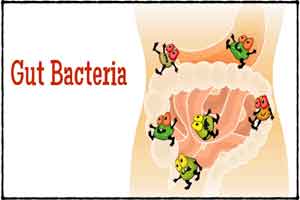- Home
- Editorial
- News
- Practice Guidelines
- Anesthesiology Guidelines
- Cancer Guidelines
- Cardiac Sciences Guidelines
- Critical Care Guidelines
- Dentistry Guidelines
- Dermatology Guidelines
- Diabetes and Endo Guidelines
- Diagnostics Guidelines
- ENT Guidelines
- Featured Practice Guidelines
- Gastroenterology Guidelines
- Geriatrics Guidelines
- Medicine Guidelines
- Nephrology Guidelines
- Neurosciences Guidelines
- Obs and Gynae Guidelines
- Ophthalmology Guidelines
- Orthopaedics Guidelines
- Paediatrics Guidelines
- Psychiatry Guidelines
- Pulmonology Guidelines
- Radiology Guidelines
- Surgery Guidelines
- Urology Guidelines
High-fiber diet & select gut bacteria greatly reduce blood sugar in T2DM

In a study led by a Rutgers University-New Brunswick, it has been found that a diet high in diverse fibers may promote a select group of gut bacteria select group of gut bacteria, greater weight loss and better lipid levels in people with type 2 diabetes.This may help the clinicians to improve their fight against type 2 diabetes.The study has been published in Science.
Scientists have identified a "guild" of gut bacteria that helped alleviate symptoms of type 2 diabetes mellitus (T2DM) in patients eating a high-fiber diet. The authors say that promoting this exclusive microbial group via personalized nutrition may serve as a novel approach for maintaining the beneficial relationship between the body and its microbiome during T2DM.
Past clinical trials have suggested eating a high-fiber diet can improve disease outcomes of T2DM, but responses to this treatment remain highly variable. To improve the efficacy of dietary interventions, it is critical to understand how the gut microbiome responds to dietary changes. Gut microbes play an array of protective roles in response to food intake; for example, hundreds of species can metabolize hard-to-digest carbohydrates to produce short-chain fatty acids (SCFAs), which provide energy to colon cells, mitigate inflammation and help regulate hunger.
Now, Liping Zhao and colleagues suggest a select group of SCFA-producing microbes is responsible for the positive impact of high-fiber diets on patients with T2DM. In two T2DM patient cohorts, the researchers observed the group under a high-fiber diet exhibited greatly reduced blood sugar and body weight compared to the control group under standard care.
Zhao et al. sequenced microbial genes in the patients' fecal samples, finding that the abundance of certain microbial species over others - as opposed to overall microbial diversity - seemed more closely correlated with health-related changes in the gut microbiota. Pursuing this hypothesis, the scientists identified 15 SCFA-producing strains that were specifically promoted by dietary fibers. Though belonging to different phyla, these bacteria acted as a guild to augment SCFA production, consequently supporting gut health by out-competing microbes that release compounds hindering effective metabolism.
For more details click on the link: http://dx.doi.org/10.1126/science.aao5774

Disclaimer: This site is primarily intended for healthcare professionals. Any content/information on this website does not replace the advice of medical and/or health professionals and should not be construed as medical/diagnostic advice/endorsement or prescription. Use of this site is subject to our terms of use, privacy policy, advertisement policy. © 2020 Minerva Medical Treatment Pvt Ltd